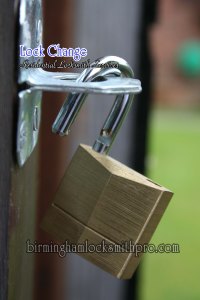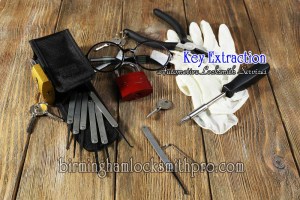
Lock Change
Are you looking for locks for your home or business? Once you begin, you’ll find out that there’s an almost endless selection of locks to choose from. To find the best lock for each need, ask yourself the following questions:
- Who will use the lock?
- How much security do you need?
- Where will the lock be placed?
- What are the surroundings like where you’ll install the lock?
Here are some of the most popular locks. Let’s look at their security features:
Knob locks are often utilized as the sole source of security for exterior doors, although they’re typically installed in addition to deadbolts. A knob lock by itself actually isn’t very secure, because the lock cylinder is just in the knob itself rather than inside the door. A knob lock can be broken off the door by a criminal in the know, using a hammer. The lock can also be forced open with pliers or with a wrench behind the knob, bypassing the locking cylinder, by a professional thief. If you presently have knob locks, you ought to consider replacing them with simple passage knobs. Adding deadbolts will give you more security.
Deadbolts are the most secure locks you can have for your home, as any locksmith professional will tell you. They’re called “dead” because there aren’t any springs to operate the bolt; a deadbolt is operated only manually, with a key or a thumbturn. Deadbolts are installed on external doors in four basic types: single-cylinder, double-cylinder, lockable thumbturn, and jimmy-proof.
A single-cylinder deadbolt is the type we normally imagine, as it has a key cylinder on the outside. A thumbturn on the inside opens and closes it. This kind of deadbolt is often used on solid doors made of wood or metal. A disadvantage of this deadbolt is that if there’s any possible access to the inside (such as through a nearby window, or through the peephole, which a professional burglar will know how to do), the door can be opened with the thumbturn.
To deal with this issue, a double-cylinder deadbolt has a key cylinder both on the inside and on the outside of the door. If the door’s locked, the double-cylinder deadbolt requires a key to open it from the inside. It’s good if your door has any glass in it, or if there’s a window near your door, because it will prevent an intruder from breaking the glass and reaching in to unlock the door. Its drawback is that in case of fire, it can be unsafe; make sure you always leave a key on the inside whenever people are at home, so that in case of an emergency, you can all get out fast.
A lockable thumbturn deadbolt is a hybrid of the single-cylinder and the double-cylinder deadbolt, giving optimized flexibility and security. It features a thumbturn on the inside, which works like a regular single-cylinder deadbolt, except that it can be locked with a key, so it can’t unlock or lock the door. This means that you can leave the thumbturn in an unlocked position while people are at home, but it will operate just like a standard single-cylinder deadbolt. When everyone is away, especially for a long time, the thumbturn can be easily locked, so even if someone gets access to the door from the inside, the deadbolt cannot be unlocked.
A jimmy-proof deadbolt is a surface-mount lock, frequently found on double doors and in apartment complexes. This deadbolt is preferred because it requires minimal door modifications. In this unique lock, the deadbolt interlocks with the jamb bracket, keeping it from any vulnerability to being pulled apart or forced from the outside by a would-be trespasser. A surface-mount lock means that the lock screws into the door’s inside, rather than with a drill pattern, the way a basic deadbolt does.

Key Extraction
Lever-handle locks are often used on inner doors in commercial facilities. They’re easier for most people to open than knob locks, because they have a large push-down handle, rather than a knob that you have to grasp and turn. When accessibility for the disabled is important, a lever lock is your best bet.
Mortise-cylinder locks are threaded, screwing into mortise hardware that’s mounted inside the door. These locks are held in place by a set screw, and a cam activates the locking mechanism. Mortise cylinders are available in numerous lengths, and come with several options for the cams, depending on the hardware used.
Rim cylinder locks help upgrade your security. You’ll see them regularly on entry glass doors, commercial doors, and sometimes on doors of apartment buildings. These locks are generally used in rim latch locks, mounted on the inside of the door. Rim cylinder locks have a long metal piece that extends out from the back of the lock, which runs through the door into a locking mechanism on the opposite side of the door.
Cam locks are the locks you see in mailboxes, filing cabinets, and cupboards. They come in various lengths, with an assortment of tailpieces (“cams”) which interface with another lock mechanism.
A rim latch lock has a rim cylinder on one side, with a surface-mount latch lock on the other. Rim latch locks can automatically lock the door as it shuts behind you, which makes them popular in apartment houses.
A wall-mounted lock is mounted in the wall, as its name says. An example is a firefighter’s box-style lock, oftentimes found in larger businesses. A wall-mounted lock provides emergency access to the building’s keys. It can be a small safe, which holds essential items. Usually it’s installed at the time of construction, although one can be installed at an existing facility. A wall-mounted lock normally has a cover or alarm sensor, which allows for networking into the building’s security system, meaning that any unauthorized access will be detected immediately.
In addition to the above locks, there are so many more. To discover which lock is ideal for each purpose, bring all your questions and concerns to a locksmith professional. If you’re located in Birmingham, Alabama, you ought to consult with a trustworthy locksmith, such as the mobile locksmith technicians on staff at Birmingham Locksmith.
Article source here: HOW TO FIND THE RIGHT LOCKS FOR YOUR NEEDS

No comments:
Post a Comment